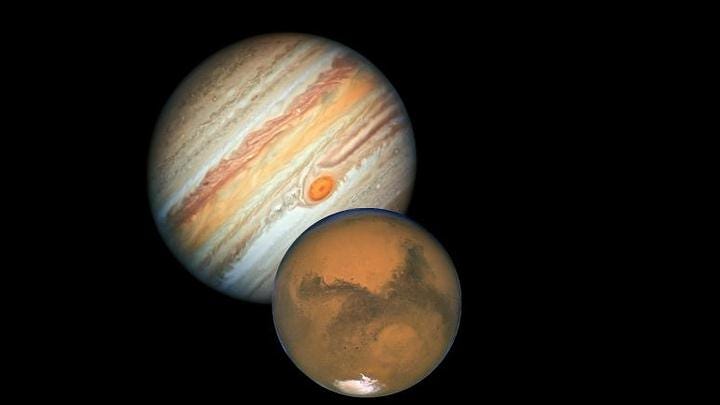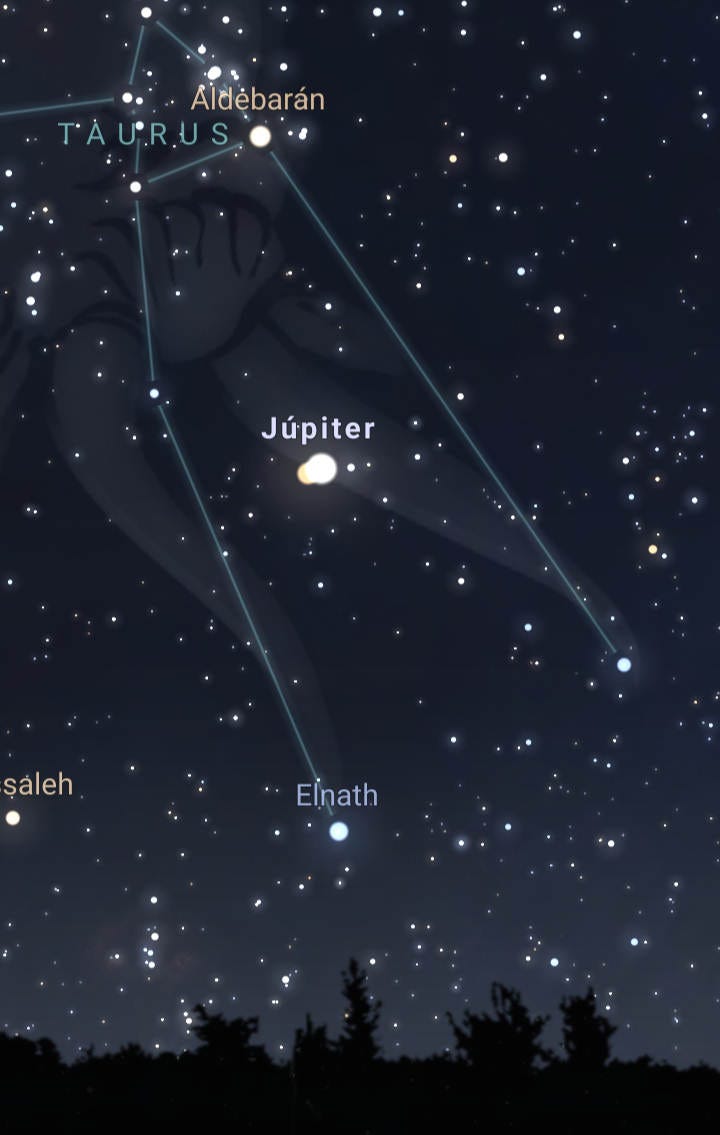Jupiter and Mars Conjunction: A Celestial Showdown This Week
Written on
Chapter 1: Overview of the Conjunction
This week, a spectacular celestial event unfolds as Jupiter and Mars align in the sky. If you look toward the northeast just before dawn on Wednesday, August 14, you’ll witness these two planets—a symbol of might and war—near each other.

Captured by Hubble, these images showcase the grandeur of both planets. Credit: Jupiter: NASA, ESA, A. Simon (Goddard Space Flight Center) and M. H. Wong (UC Berkeley). Credit: Mars: NASA/ESA, J. Bell (Cornell University) and M. Wolff (SSI).
A planetary conjunction occurs when multiple planets appear close together in the sky. During this event, Jupiter and Mars will be separated by merely a third of a degree, a rare occurrence that won't be repeated until 2033, when they will be even closer. The optimal time to observe this conjunction is from the early morning hours (around 4:00 or 5:00 a.m.) until dawn. During this window, the planets will rise in the northeastern sky near the Taurus constellation, reaching nearly 50 degrees above the eastern horizon.
While Jupiter shines approximately 20 times brighter than Mars, both are easily visible to the naked eye, provided the weather is clear. For a more enhanced experience, using a quality pair of astronomical binoculars or a small telescope will greatly improve your view. These tools will allow you to not only see the planets more distinctly but also observe Jupiter's four largest moons: Ganymede and Callisto will be positioned beside Jupiter, whereas the volcanic Io and potentially habitable Europa will be nestled between Jupiter and Ganymede. Mars will sit slightly above Jupiter and its moons.

This illustration depicts the conjunction of Mars and Jupiter on August 14, 2024. Credit: Stellarium.
Though the planets may seem incredibly close during this conjunction, it is merely an optical illusion. In truth, Mars is in the foreground while Jupiter is positioned around 500 million kilometers away. This conjunction marks the last of the year, with the next one scheduled for January 20, 2025, when Venus and Saturn will cross paths.
Additionally, skywatchers can look forward to Saturn's annual opposition on September 7, when Earth will sit directly between the Sun and Saturn, showcasing the ringed planet at its brightest and most magnificent. Any telescope will provide a clear view of its distinctive ring structure.
Chapter 2: Viewing Tips and Video Insights
To help you prepare for this remarkable event, here are two informative videos:
The first video explores the alignment of Jupiter and Mars, providing guidance on how to observe this rare phenomenon.
The second video discusses the conjunction of Jupiter and Mars, highlighting which planets are visible to the naked eye and offering tips for optimal viewing.
If you found this article engaging and would like to support my work, consider clapping (50 claps) to help it gain visibility. Follow me on Medium and subscribe to my newsletter for updates on future posts. Your support is greatly appreciated, whether through donations or joining my Substack publication (Mysteries of the World).